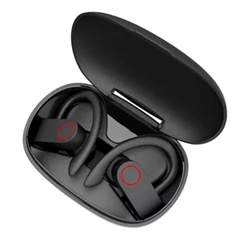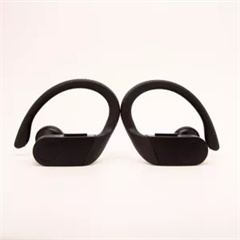The evolution of earphone technology has been a fascinating journey, marked by significant advancements in design, materials, sound quality, and functionality. Here’s an overview of the key stages in the evolution of earphone technology:
- Early Earphones (1800s – 1900s): The earliest forms of earphones were basic and consisted of simple diaphragm drivers that produced low-quality sound. They were often used in telephone and radio communications.
- Dynamic Drivers (1920s – 1930s): The development of dynamic driver technology marked a significant improvement in sound quality. These earphones used a diaphragm connected to a coil in a magnetic field to create sound vibrations. They were larger and bulkier than modern earphones and were primarily used for communication purposes.
- Transistor Era (1950s – 1960s): With the advent of transistors, earphone technology started to become more portable and consumer-oriented. These earphones were still relatively bulky and required external devices like transistor radios.
- Miniaturization and Portability (1970s – 1980s): The introduction of miniaturized components and advancements in materials allowed for smaller and more portable earphones. The Walkman and other portable cassette players popularized the use of earphones for personal music listening.
- Earbuds and In-Ear Monitors (1990s – 2000s): Earbuds became mainstream in the 1990s, with devices like the Sony Walkman and later the iPod popularizing them. However, these earbuds often sacrificed sound quality for portability. In-ear monitors (IEMs) also gained traction during this time, offering better sound isolation and improved audio quality.
- Balanced Armature Drivers (2000s – Present): Balanced armature driver technology gained prominence in the 2000s. These drivers allowed for more precise tuning of sound profiles and improved clarity, leading to the rise of high-quality in-ear monitors used by musicians, audiophiles, and professionals.
- Hybrid Drivers and Advanced Materials (2010s – Present): Earphone manufacturers started combining multiple driver technologies within a single unit, known as hybrid drivers. This allowed for a more balanced sound and better representation of different frequency ranges. Advanced materials such as carbon fiber and titanium are now used to improve durability and sound quality.
- Wireless and True Wireless Earphones (2010s – Present): The introduction of Bluetooth technology led to the development of wireless earphones, initially connected with a neckband or a cable between earbuds. More recently, true wireless earphones have become popular, with each earbud functioning independently and wirelessly connecting to devices.
- Active Noise Cancellation (ANC) and Smart Features (2010s – Present): Many modern earphones incorporate active noise cancellation technology, which uses microphones to analyze and cancel out ambient noise. Additionally, smart features like touch controls, voice assistants, and integration with smartphones have become standard in high-end earphones.
- Customization and Personalization (2010s – Present): Brands started offering custom-molded earphones, allowing users to have a perfect fit. Some manufacturers also provide software-based sound customization, enabling users to tailor the sound profile to their preferences.
- High-Resolution Audio and Hi-Fi (2010s – Present): With the growing popularity of high-resolution audio formats, earphone manufacturers began designing models that could reproduce the finer details of these high-quality recordings, catering to audiophiles seeking the best sound experience.
As technology continues to advance, we can expect further improvements in areas such as battery life, sound quality, connectivity, and comfort, leading to even more sophisticated and capable earphones in the future.












